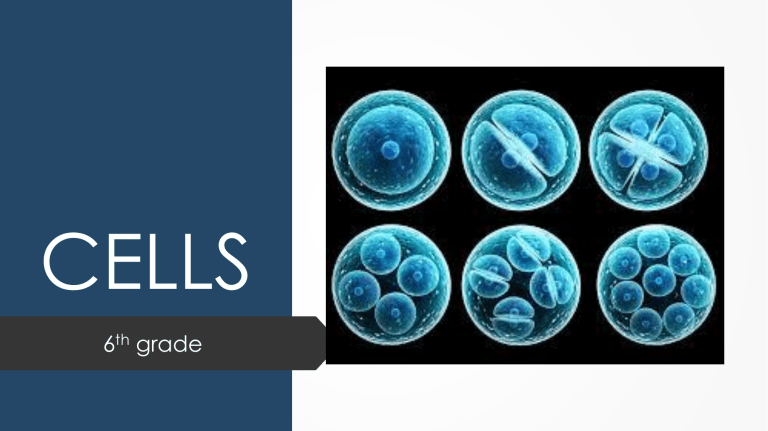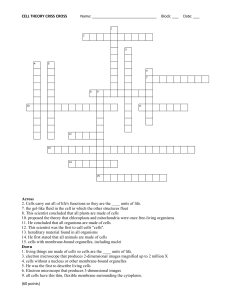
CELLS 6th grade WHAT IS A CELL? A cell is the smallest functional and structural unit of all living organisms. Some organisms are just one cell like bacteria. Others, like humans, contain trillions of cells. Example: blood cells, white blood cells, nerve cells, skin cells, etc. Examples White blood cells Skin cells Nerve cells What is the cell theory? Discoveries of Matthias Schleiden, Theodor Schwann, and Rudolf Virchow led to one very important theory called the cell theory. The cell theory lists three basic characteristics of all cells and organisms: 1. All organisms are made up of one or more cells. 2. The cell is the basic unit of all organisms. 3. All cells come from existing cells. All Organisms Are Made Up of One or More Cells Anton Van Leeuwenhoek – was the first person to describe actual living cells when he looked at a drop of pond water under a microscope. In 1838, Matthias Schleiden concluded that plants are made of cells. In 1839, Theodor Schwann determined that animal tissues are made of cells. He concluded that all organisms are made up of one or more cells. Unicellular organisms- organisms that are made up of one cell. Multicellular organisms – organisms that are made up of more than one cell. All Organisms Are Made Up of One or More Cells Schwann wrote the first two parts of the cell theory. In 1858, Rudolf Virchow added the third part of the cell theory that all cells come from existing cells. What parts do all cells have in common? All cells have some parts in common, including cell membranes, cytoplasm, organelles, and DNA. Cell membrane – is the protective layer that covers a cell’s surface and acts as a barrier. Cytoplasm – is the fluid that all organelles are suspended. Organelles – is a small body in a cell’s cytoplasm that is specialized to perform a specific function. DNA – is located inside the nucleus. Deoxyribonucleic acid, or DNA, is genetic material that provides instructions for all cell processes. DNA KARYOTYPE - FEMALE KARYOTYPE - MALE Two types of cells Prokaryotic: is a single celled organism that does not have a nucleus or membranebound organelles. Two types of cells Eukaryotic: is an organism made up of cells that contain their DNA in a nucleus. Amoeba and Yeast How the microscope influenced the cell theory? The Invention of the Microscope helped the development of the cell theory because it allowed the scientists to actually discover that everything was made up of cells, and what cells do to come up with that theory. With the development and improvement of the light microscope, the theory created by Sir Robert Hooke that organisms would be made of cells was confirmed as scientist were able to actually see cells in tissues placed under the microscope.




